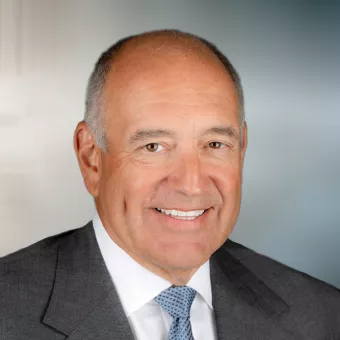
Case Overview
Train crash lawsuits help people injured in train collisions, derailments and track-related accidents receive compensation for their injuries. Because train accident lawsuits are often complex and may involve multiple parties, speaking with a lawyer experienced in these accidents is critical.
Key takeaways about train crash lawsuits
- Train crash lawsuits can be complicated, requiring the assistance of a knowledgeable attorney.
- Train crash lawsuits can vary based on the type of train involved, the type of accident, what caused the accident and what injuries you sustained.
- Compensation from a train crash lawsuit can help cover medical bills and other costs related to injuries caused by the incident.
Lawsuits representing train crash victims
Motley Rice transportation attorneys represent injured passengers and the families of those who have suffered tragedy as a result of train incidents or accidents.
Our catastrophic personal injury attorneys have the knowledge, experience and resources to:
- Investigate and resolve cases involving railroads
- Represent plaintiffs who have suffered from serious injury and wrongful death
- Hold negligent parties accountable
Types of defendants
Motley Rice transportation attorneys have extensive experience advocating for victims who were injured or tragically killed in train crashes and derailments. They can help you determine who to sue (the defendant) in a train-related lawsuit.
Several types of defendants may become involved in train crash lawsuits:
- Passenger rail defendants: Subways, metros and other forms of passenger rail are essential elements in America’s transportation system. However, rail companies like Amtrak and New Jersey Transit have been defendants in lawsuits involving collisions and derailments.
- Freight rail defendants: Freight trains are a popular means of getting cargo from one place to another. But collisions and chemical spills involving freight trains aren’t uncommon. For example, in February 2023, a Norfolk Southern train derailed in East Palestine, Ohio, exposing area residents to hazardous chemicals. This dangerous waste included butyl acrylate and vinyl chloride.
Types of plaintiffs
Motley Rice attorneys have represented many types of people in train crash lawsuits. Common plaintiffs may include:
- Employees harmed by a crash, accident or derailment (this may include injuries sustained during the accident or as a result of exposure to harmful substances released from a crash)
- Passengers harmed in a crash, accident or derailment
- People whose property (land, structures, etc.) was harmed by a train crash or derailment
A sampling of our cases
Our lawyers have represented and consulted on many train accident lawsuits, including:
- A mother and daughter injured in a 2018 Amtrak train crash in Cayce, S.C.
- A 2005 Graniteville, South Carolina, Norfolk Southern train collision and chlorine gas exposure
- A 2005 Glendale, California, Metrolink commuter train and on-track vehicle collision
- A 2004 Macdona, Texas, Union Pacific Railroad Derailment involving crew fatigue and chlorine gas inhalation
Types of train-related lawsuits
Many Americans travel by rail via commuter trains, subways, metro systems and high-speed trains to and from work or other destinations. Unfortunately, train accidents occur, some resulting in severe injuries and various types of train-related lawsuits.
Train collision lawsuits
A train collision lawsuit is a personal injury case brought against those responsible for a train collision. These types of lawsuits seek to recover monetary compensation for injuries to the plaintiffs. To receive damages, injured people must prove that someone else’s negligence led to the crash and their injuries.
Train derailment lawsuits
When a train comes off its rails and crashes, those injured may file train derailment lawsuits. Train derailment lawsuits are typically filed against individuals and businesses liable for the accident. These cases often pursue damages for property damage near the derailment site, severe personal injuries and wrongful deaths.
Train track accident lawsuits
People who were injured in train accidents caused by faulty tracks bring train track accident lawsuits. These claims are often filed against railroad companies, equipment manufacturers, track owners and other parties responsible for keeping train tracks safe. Train track accident lawsuits typically pursue monetary compensation for property and personal injury damages.
Starting a train crash lawsuit
Starting a train crash lawsuit can be daunting, but Motley Rice attorneys are here to help. If you have recently been in a train accident, be sure to keep:
- Communication from the train company
- Contact information for anyone else you may have been traveling with
- Medical records and receipts from injury treatment
- Photos of the crash
All of these can help your attorney build your case. Your attorney can also help you collect things like:
- Accounts from eyewitnesses
- Accounts from potentially liable parties
- Documentation of your injuries and related medical treatment
- Evidence from the accident scene
Train-related lawsuit settlements
In the Graniteville, S.C., incident, Motley Rice attorneys achieved a settlement for those injured when two Norfolk Southern trains collided in January 2005. The accident caused a massive chlorine spill that killed eight people and injured dozens. The settlement compensated for personal injury claims associated with the crash and chemical spill.
Frequently asked questions about train accident lawsuits
Who can file a train accident lawsuit?
Injured passengers or crew members may be eligible to file a train accident lawsuit. Surviving family members may also be able to file a lawsuit on behalf of a loved one. A train accident lawyer can help by evaluating your claim, representing you in court and guiding you through the legal process.
What types of damages are available after a train accident?
Economic and non-economic damages may be awarded to a plaintiff after a successful lawsuit.
- Economic damages might include compensation for medical treatment, lost wages and reduced earning potential.
- Non-economic damages could be awarded for diminished quality of life, emotional distress and pain and suffering.
In the event of a fatality, wrongful death damages may also be available.
The specific types and amounts will vary depending on the unique circumstances of the case. People should speak with an attorney to understand what damages may be available for them.
What are some contributing factors to train accidents?
The FRA has identified the top eight human errors that could result in a train accident. These include:
- Leaving switches in the wrong position (improperly lined track switches)
- Failing to latch and or lock a track switch
- Lack of point protection (shoving or moving rail cars without someone in front of the move to monitor conditions ahead)
- Shoving rail cars with point protection without properly controlling the movement
- Failing to determine the track ahead is clear before starting a shoving movement
- Leaving rail cars somewhere that interferes with or obstructs train movements on an adjacent track
- Operating over a track switch previously damaged or broken
- Failure to apply or remove a derail (a precautionary safety device)
These factors can contribute to incidents that require investigation by the FRA, such as:
- Any collision, derailment or passenger train incident resulting in serious injury or death
- Any railroad accident resulting in death to an on-duty railroad employee or railroad contractor
- Any railway crossing accident, accidents with damages over $1 million
- Accidents involving toxic or nuclear materials and runaway equipment
- Incidents generating considerable public interest
- Most Amtrak-related accidents
Our experience with transportation lawsuits
Our attorneys have litigated numerous complex transportation lawsuits, including cases related to commercial truck injuries, bus crash passenger injuries and train crash injuries. Motley Rice has experience with the legal, technical and financial aspects of these cases. Informed by years of experience litigating these types of cases, Motley Rice attorneys can offer helpful legal advice and guidance to seek justice and compensation for transportation-related claims.
Key takeaways
Lawsuits representing train crash victims
Types of train-related lawsuits
Starting a train crash lawsuit
Train-related lawsuit settlements
Frequently asked questions about train accident lawsuits
Our experience with transportation lawsuits
Start Your Motley Rice Consultation in Simple Steps
Submit Information
Call us or fill out our online form with the details of your potential case.
Case Review
Our team reviews your information to assess your potential case.
Case Consultation
Talk with us about next steps.


